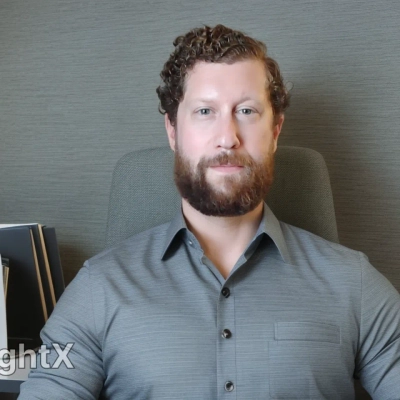8 Ways Therapists Have Evolved their Clinical Methodology Since Starting their Practice
The field of therapy is constantly evolving, and practitioners are adapting their methods to meet the changing needs of their clients. This article delves into the ways therapists have transformed their clinical approaches since beginning their practices, drawing on insights from experts in the field. From embracing telehealth to prioritizing authentic connections, these professionals share how they've refined their techniques to provide more effective and compassionate care.
- Embracing Telehealth for Authentic Client Care
- Prioritizing Connection Over Quick Solutions
- Understanding the Person Behind the Symptoms
- Adapting to Virtual Therapy Sessions
- Addressing Emotional Roots of Sexual Concerns
- Recognizing Systemic Influences on Client Experiences
- Transforming Practice Through Imago Relationship Therapy
- Developing Acceptance and Integration Training
Embracing Telehealth for Authentic Client Care
One significant evolution in my practice has been the intentional shift to 100% telehealth - not out of necessity, but as a lifestyle design choice that allows me to serve clients at the highest level while honoring my own values. I transitioned to telehealth early because I realized I couldn't authentically guide clients toward fulfilling lives if I wasn't actively designing my own. This shift gave me the flexibility to maintain work-life balance and build a sustainable practice while providing high-quality care.
More recently, I've added EMDR to my clinical toolkit, specifically for clients processing spiritual awakenings and profound identity transitions. This evolution reflects my commitment to meeting clients where they are with evidence-based approaches that honor both the clinical and existential dimensions of their experience.
The through-line in my practice? Continuously asking myself if I'm living the principles I encourage in my clients and adjusting when the answer is no.
Prioritizing Connection Over Quick Solutions
One of the most significant ways my approach to therapy has evolved since I first started practicing is my shift from being solution-driven to being connection-driven. When I began my career, I focused heavily on clinical structure—diagnostic precision, evidence-based interventions, and measurable outcomes. My sessions often centered on finding the "right" technique for each problem, whether it was cognitive restructuring for anxiety or behavioral activation for depression. While these methods were effective in some cases, I noticed that progress stalled whenever the therapeutic relationship itself felt rushed or overly clinical. Patients would comply with strategies but not necessarily heal.
What prompted the change was a deeply humbling experience early on with a young adult patient who had endured complex trauma. Despite my best use of CBT tools, she made little progress and eventually told me, "You listen to fix me, not to know me." That sentence stayed with me—it revealed how much I was prioritizing intervention over understanding. I began re-evaluating my entire approach, diving deeper into trauma-informed and person-centered frameworks, where safety, trust, and attunement form the foundation of healing.
Over time, I learned that techniques are only as effective as the relationship they're delivered through. Now, I spend more time co-creating the therapeutic process—validating emotions before analyzing them, inviting patients to set goals collaboratively, and pacing interventions according to their readiness rather than a fixed plan. I also integrate more somatic awareness and mindfulness, acknowledging that healing isn't purely cognitive; it's embodied.
This evolution has made therapy far more relational, authentic, and sustainable—for both my patients and myself. The change taught me that therapy is not about applying methods to people; it's about meeting people with methods that fit their humanity. It's a slower process, but one that nurtures genuine transformation rather than compliance.

Understanding the Person Behind the Symptoms
My first doctoral practicum was with the founders of IPSRT (Interpersonal Social Rhythm Therapy) - the "SR" part was an adjunct for bipolar disorder to IPT (Interpersonal Therapy). After reading the IPT and IPSRT books, I recall thinking, "It is interpersonal without the person." In other words, there isn't a focus on who the person is as an individual, nor their interpersonal style or patterns, but simply on identifying an interpersonal problem focus (a symptom) and making behavior changes. While this is still a modality of therapy I use, I went back to its psychodynamic roots, including Harry Stack Sullivan's Interpersonal Theory of Psychiatry, which the IPT/IPSRT books reference.
Understanding the person as a complete human, including how they relate to themselves and others, is core to psychotherapy. Sure, we can create some brief symptom changes with problem-focused modalities, but longer-term change and individualized therapy involve some form of depth psychology. Once I understand the individual (which is an ongoing process), this shapes problem-focused interventions. In other words, this is an integrative therapy: we start with a guiding compass to create a conceptual framework from which to structure our interventions.
As an example, I was the covering program director for the inpatient Autism and Developmental Disorders program at UPMC's Western Psychiatric Hospital for a couple of years. A patient was admitted for remarkable disruption at his group home, including setting fires. Behavioral interventions seemed to worsen the problem and could not be explained by an extinction burst. I asked the Assistant Program Director, who was an excellent clinician, to try to create a mental image of this individual based upon her countertransference when he was not causing remarkable mayhem. We both landed on an image of a toddler trying to get a laugh - a class clown. We started engaging with him to validate this identity and encourage it in safe ways, while ignoring or implementing consequences when it got out of hand, which it almost never did after we saw him for who he wanted to be. He became a delight and was thrilled with his newfound role as the group comedian - he had no need to "up the ante" to get recognition.

Adapting to Virtual Therapy Sessions
When I first began practicing therapy, almost all sessions were held in person. I believed sitting face to face was the best way to connect and build trust. Over time, especially with the growth of telehealth, my approach has changed. I learned that therapy is not about where it happens but about the connection between therapist and client.
At first, I was unsure how therapy would work online. I worried it might feel less personal or harder to focus. Instead, I found that many clients felt more comfortable meeting from their own space. Sessions became easier to schedule, and clients were more consistent with attendance. Telehealth also made therapy more accessible for people with busy schedules, parents at home, or those living far from an office.
Telehealth has changed how I view accessibility and care. It showed me that therapy can meet people where they are, both emotionally and physically. The most important part of therapy is the relationship, not the setting.

Addressing Emotional Roots of Sexual Concerns
When I first started practicing as a sex therapist, I focused primarily on helping clients address sexual issues through communication tools and behavioral strategies. Over time, I began to realize that these surface-level approaches often did not create lasting change. For me, the real turning point came when I started looking deeper into the emotional and relational roots of sexual concerns. I think that most sexual difficulties are not just about technique or desire mismatches, but about attachment patterns, vulnerability, and how people experience safety within intimacy.
In my experience, shifting toward a more integrative and trauma-informed approach completely changed how I work. Instead of asking only what happens in the bedroom, I now explore how clients relate to themselves and to their partners in moments of emotional closeness. Many people carry unprocessed shame, cultural conditioning, or past trauma that shapes how they connect and express desire. Once those layers are addressed with compassion and curiosity, sexual fulfillment tends to improve naturally.
I also started incorporating more somatic awareness into my sessions. This helps clients tune into their body's responses instead of staying in their head. In my opinion, the body often reveals truths that words alone cannot capture. When clients learn to listen to those signals, they begin to experience intimacy with more presence and confidence.
For me, this evolution in my work came from watching how deep healing occurred only when clients felt safe enough to explore both the emotional and physical aspects of their sexuality. I now see sex therapy not as fixing a problem, but as guiding people back to connection with themselves first, and then with their partners. That shift has made my practice more holistic and deeply human.
Recognizing Systemic Influences on Client Experiences
My approach to therapy has significantly evolved from focusing primarily on individual psychology to recognizing how broader systems and environments shape client experiences. This shift occurred as I increasingly encountered clients whose challenges were deeply connected to systemic barriers rather than purely personal factors. Now I work to help clients identify these external influences while simultaneously addressing my own practice by actively dismantling ableism and incorporating anti-racist principles into my therapeutic framework.

Transforming Practice Through Imago Relationship Therapy
When I first became a therapist over two decades ago, I considered myself a "generalist" - open to seeing anyone who came for therapy. But early in my career, my wife and I attended an Imago Relationship Therapy session for our own marriage - and it completely changed how I understood healing and connection.
Instead of focusing on who was "right," Imago helped us see the deeper needs and childhood wounds driving our conflicts. That experience was so transformative that I began training in the method myself and eventually shifted to practicing it exclusively.
I became an advanced therapist in Imago therapy and now am a clinical faculty trainer of the Imago International Training Institute. For upcoming training opportunities, please visit https://www.themarriagerestorationproject.com/imago-training-courses

Developing Acceptance and Integration Training
When I first began practicing, I primarily focused on symptom management and insight-based approaches, like many therapists. After years of seeing clients struggle with the same issues despite gaining understanding, I developed Acceptance and Integration Training(r) as a way to address the root causes of suffering rather than just managing symptoms. This shift came from recognizing that true transformation requires accepting and integrating painful experiences rather than simply gaining insight about them. The results I've seen with this approach have been profound, with clients rapidly experiencing more lasting changes than with traditional methods alone.



